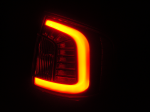- Forum Supporters
-


- Elite Member
- Posts: 16,075
- Location: Beltsville, MD
- Logged
A brief article in Motor Trend
http://www.motortrend.com/news/turbo-tech-2016-mazda-cx-9-taking-closer-look/QuoteTURBO TECH OF THE 2016 MAZDA CX-9: TAKING A CLOSER LOOK
Frank Markus
May 23, 2016
Why the CX-9 Doesn't Offer Engine Stop-Start, and More
Much of the magic in the 2016 Mazda CX-9's 2.5-liter turbo-four engine happens in the exhaust manifold. Its first trick is to plumb two paths into the turbo, a big one with a flow-control shutoff valve, and a smaller one. Mazda tech guru and former Sport Compact Car colleague Dave Coleman explains that at low engine speeds the valve shuts so that the smaller amount of exhaust gets forced through the little opening and onto the turbine a whole lot faster. He likens it to holding your thumb over the garden hose to spin that paint roller you're cleaning way faster than the open hose would.
Coleman describes the engine's next trick with another paint metaphor. You know how compressed air is used to suck paint out of a reservoir when airbrushing that rainbow and unicorn onto your custom van? That same trick leverages the initial burst of high-velocity flow exiting a cylinder whose exhaust valve has just opened, to help suck the residual exhaust out of an adjacent intake runner serving the cylinder that fired immediately before it. It's called the "ejector effect," and a unique, ultra-short four-into-three-into-one "pulse converter" manifold makes it happen.
All of this helps boost efficiency and broaden the torque curve, but Mazda wanted to ensure the 2016 CX-9 would deliver on the fuel economy promised by the EPA's gentle testing, something most downsized turbo engines have trouble doing. To do this, Mazda needed a better way of keeping the cylinders cool during hard use than spraying in extra fuel that can't contribute to propulsion (most hard-working turbos do this). The answer? Route some exhaust up to an intercooler in front and pump this cooled EGR back into the intake. This greatly increases the load point where fuel enrichment is required for cooling. Mazda expects the 2016 CX-9 to earn 21-22/27-28 mpg city/highway.
Oh, and after spending all that money to add an EGR cooler that doesn't help on the EPA cycle, why didn't Mazda invest in engine stop-start tech? Not enough payoff. This 2.5-liter doesn't burn enough fuel at idle, and because most Americans don't idle their cars for very long, the tech doesn't warrant the couple hundred dollar expense of doing auto stop-start right. Coleman's list of what's needed to do it right: an extra 12-volt battery and a fancy crankshaft-position sensor that knows precisely where the engine is, even when it's not spinning. This allows the starter to get the crankshaft into precisely the ideal position so that a cylinder is ready to fire, assisting a faster, less noticeable restart.
2007 Ford Edge SEL, Powerstop F/R Brake Kit, TXT LED 6000K Lo & Hi Beams, W16W LED Reverse Bulbs, 3BSpec 2.5w Map Lights, 5W Cree rear dome lights, 5W Cree cargo light, DTBL LED Taillights
If tuned: Take note of the strategy code as you return to stock (including 3 bar MAP to 2 bar MAP) -> take car in & get it serviced -> check strategy code when you get car back -> have tuner update your tune if the strategy code has changed -> reload tune -> ENJOY!